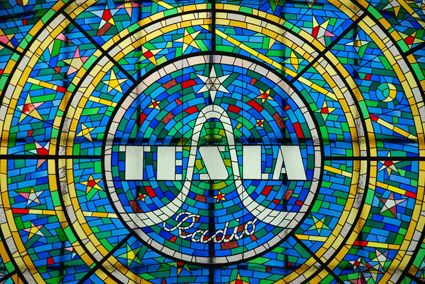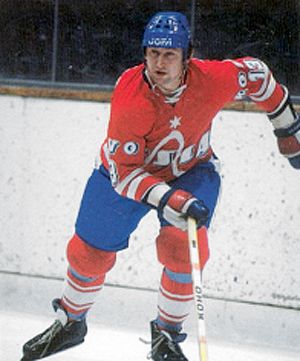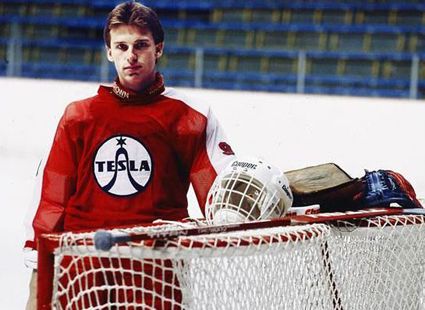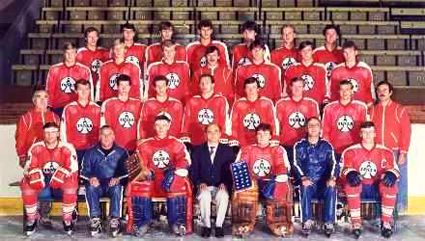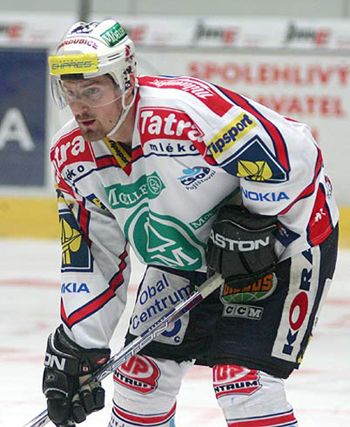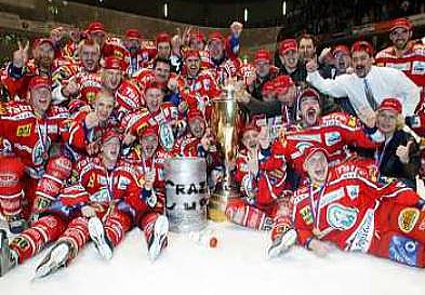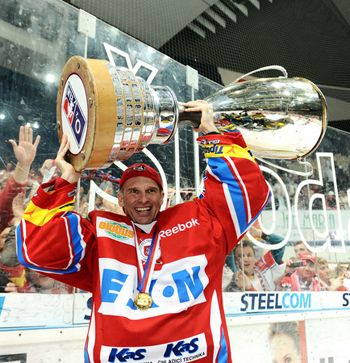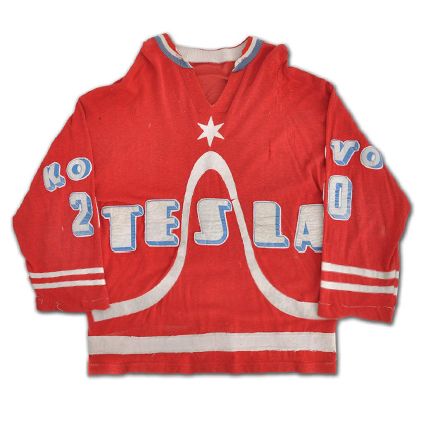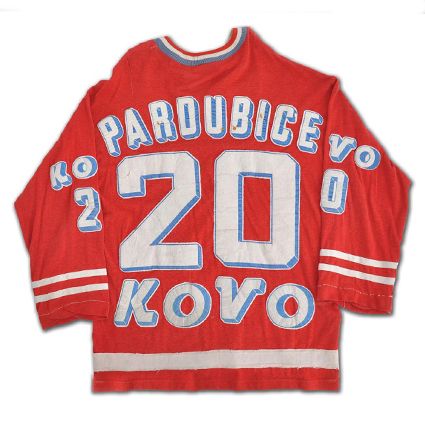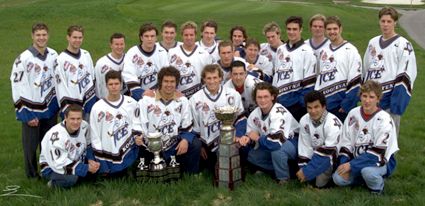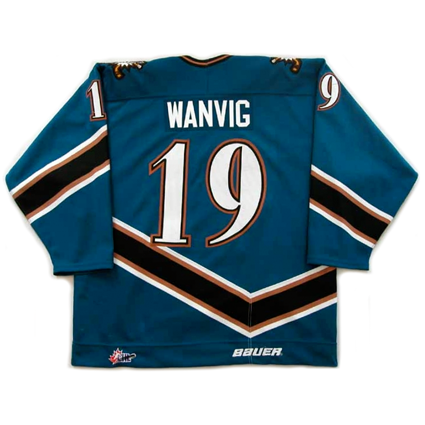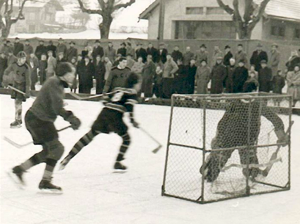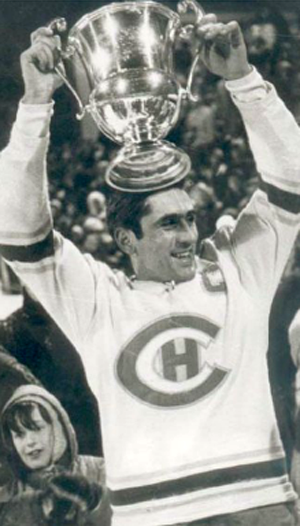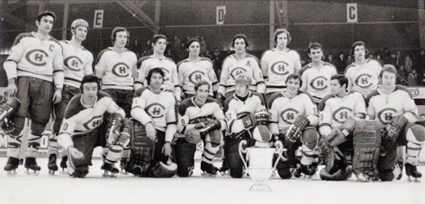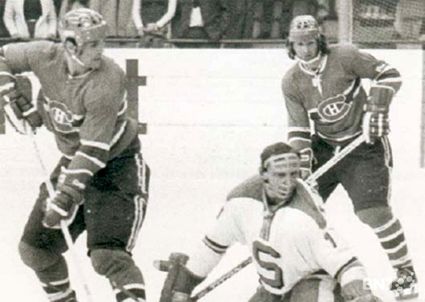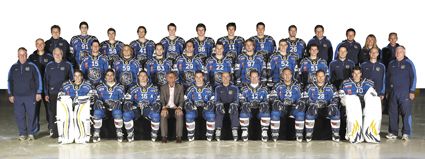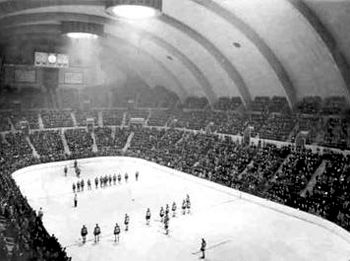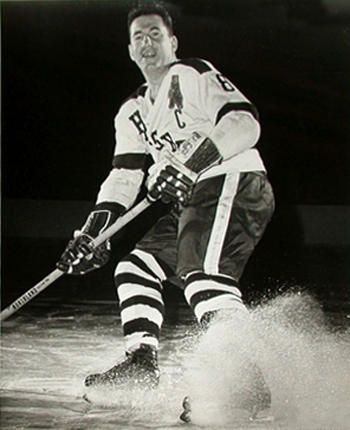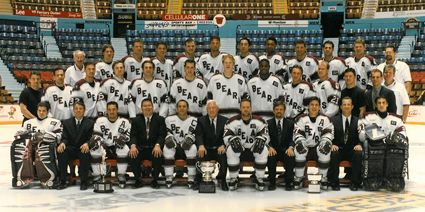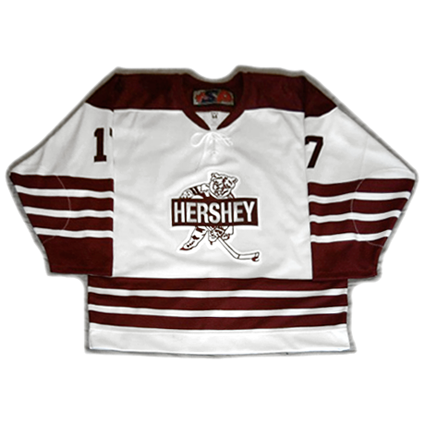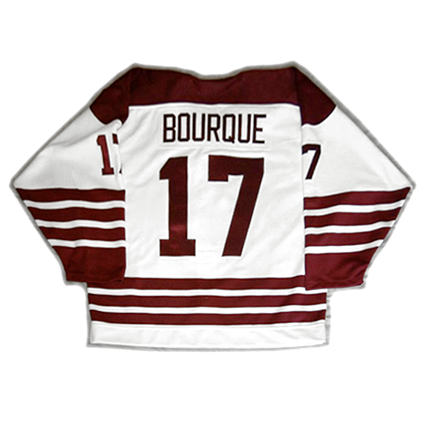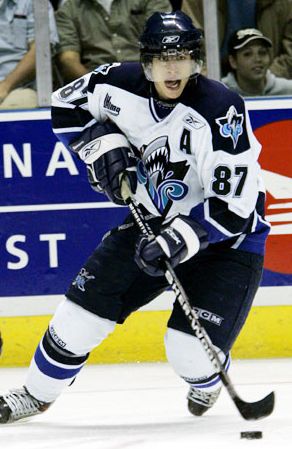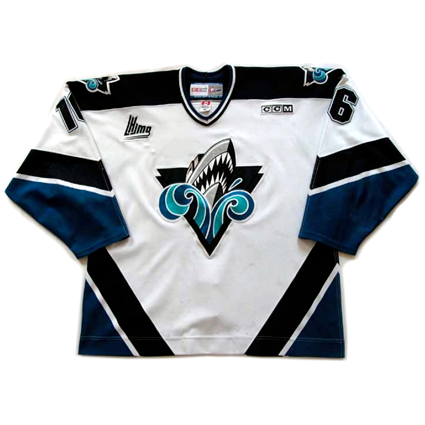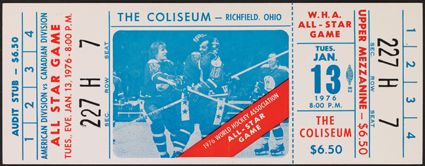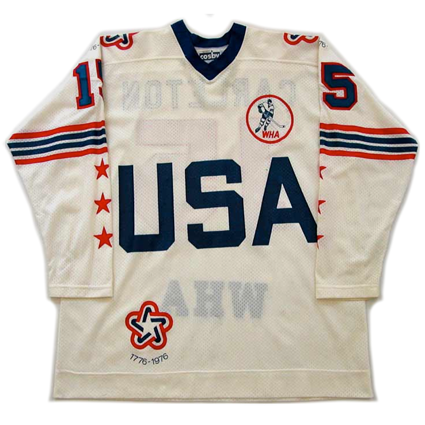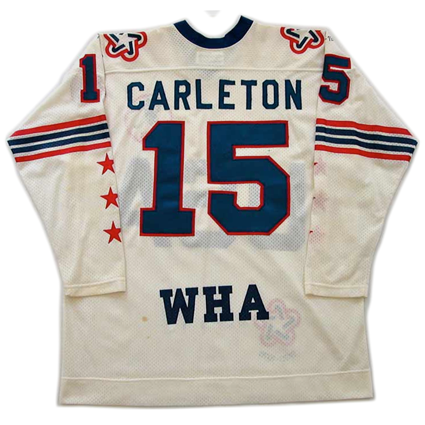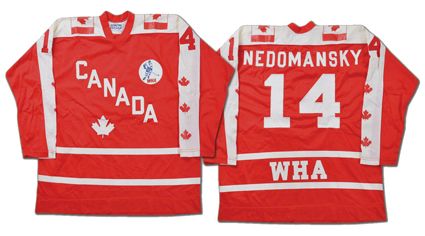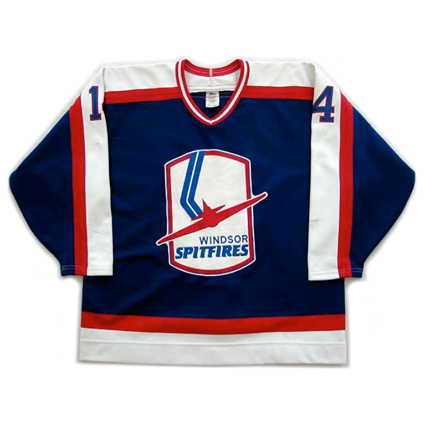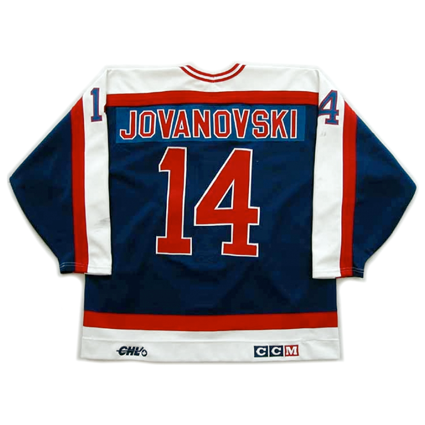Saturday, July 20, 2013
1975-76 Tesla Pardubice Jiří Novák Jersey
July by the Numbers returns to Eastern Europe for jersey #20.
HC Pardubice was formed in 1923 in Czechoslovakia. The club began to play a regular schedule of games in the early 1930's and at the end of World War II a new open air stadium with artificial ice arrived.
Shortly thereafter, the club won a second division title in 1949-50, earning promotion to the top level of Czech hockey, the Czechoslovak First Ice Hockey League. Since their promotion in 1950, they have remained without interruption at the top level of Czech hockey, a remarkable record of over 60 years of consistency and competitiveness.
On the occasion of their promotion in 1950-51, the club adopted a new name, Slavia Pardubice, which was then changed to Dynamo Pardubice for the 1953-54 campaign. The club set a new high water mark with a third place finish in 1959-60, the same season a roof was added to the stadium for the first time!
The club changed names once again due to a corporate sponsorship arrangement with Tesla, the government-owned electronics conglomerate, and thus became knows as Tesla Pardubice beginning in 1960-61.
In 1964-65, Zdeněk Špaček of Pardubice led the league in scoring with 33 goals. The club received an influx of talent from the 1967 Czechoslovak junior champions when Bohuslav Šťastný, Jiří Novák and Vladimír Martinec all joined the squad which paid off with their first ever league championship in 1972-73 following a first place regular season finish, coming from a 24-9-3 record, and a 4 games to 2 end the domination of six time defending champions Dukla Jihlava. Martinec was awarded the Golden Hockey Stick as the league MVP following the season, the first of four he would win over the next seven seasons.
Vladimír Martinec
That championship earned Pardubice a place in the following season's European Champions Cup, outlasting 15 other clubs to reach the final against the dominant Central Red Army Club of Moscow, Soviet Union, who had won the last five cups in a row. Pardubice defeated Red Army in Game 1 by a score of 3-2 at home, but fell in the second game 6-1 in Moscow for an 8-4 aggregate score for the Soviets.
In December of 1977, Pardubice came to North America and played four exhibition games against clubs from the NHL, losing 6-1 to the Philadelphia Flyers , defeating the Minnesota North Stars 4-2 and then losing to the Detroit Red Wings 5-4 and the New York Islanders 8-3.
In 1978-79, Martinec won his third MVP award, following previous ones in 1975 and 1976, when he led the league with 42 goals.
Two seasons later saw the arrival of Czech hockey legend and Pardubice native, goalkeeper Domink Hašek, who later became the club's number one netminder in 1982-83.
Hašek guided Tesla to the league championship in 1986-87 and 1988-89, winning the Golden Hockey Stick on both occasions. Also winning an award for Best Coach, was former star player Martinec.
1986-87 league champions Tesla Pardubice
With the many political changes in the world in the early 1990's, including the overthrow of the communist government in 1989, the club acquired a new name for the 1991-92 season when they became known as HC Pardubice.
Pardubice became members of the Czech Extraliga following the division of Czechoslovakia into the Czech Republic and Slovakia in 1993. The club has changed names several times since 1995 through a series of sponsorships.
The club rose to the top again, reaching the final in 2003-04 and winning their fourth championship in 2004-05, taking advantage of the opportunity to employ Jan Bulis, Milan Hejduk and playoff MVP Ales Hemsky during the NHL lockout.
Milan Hejduk
2004-05 champions HC Pardubice
Following his retirement from the NHL in 2008, Hašek returned to his roots and signed a one year contract with Pardubice for the 2009-10 season, going 23-10 on his way to leading the club to it's fifth and most recent championship at the age of 44.
Domink Hašek celebrates another championship on his return to him hometown of Pardubice
Today's featured jersey is a 1975-76 Tesla Pardubice Jiří Novák jersey. The front is dominated by the Tesla electronics company logo which makes for a striking jersey unlike any other. The jersey is customized in the classic Czech style of of the era with a small drop shadow and even smaller outline on both the letters, numbers and sponsorship logos.
Novák played for Pardubice from 1967 to 1970 and again from 1972 to 1981. His #20 has since been retired by the club, one of nine such honored sweaters in team history.
Today's video segment is Pardubice winning their most recent championship in 2010.
This next video is a slide show highlighting the fans of Pardubice, showing their passion for the club.
Labels:
Tesla Pardubice
Friday, July 19, 2013
1998-99 Kootenay Ice Kyle Wanvig Jersey
July by the Numbers travels to western Canada for Jersey #19.
The Western Hockey League was founded in 1966 and consisted of seven teams in Saskatchewan and Alberta. Currently, membership has grown to 22 clubs in not only Saskatchewan and Alberta, but also Manitoba and British Columbia in Canada and teams in Washington and Oregon in the United States.
The league began to grow and expand, attracting more and more clubs and sending players such as Bobby Clarke and Reggie Leach to the NHL only helped it's credibility. It eventually expanded all the way west to Vancouver and then even south into the United States. The "outlaw" league was then recognized by the Canadian Amateur Hockey Association and allowed to compete for the Memorial Cup, the national junior hockey championship decided annually between the champions of the WHL, Ontario Hockey League and Quebec Major Junior Hockey League plus the tournament's host club, beginning in 1970.
The first WHL team to win the Memorial Cup was the Regina Pats in 1974, followed by New Westminster Bruins back to back in 1977 and 1978. Five more championships followed in the 1980's before the Kamloops Blazers took three between 1992 and 1995. Portland added their second in 1998 to give the WHL a total of four in the 1990's. Another five in the 2000's brought the league total to 18 in the 40 years they've been eligible.
The Kootenay Ice were originally formed in 1996 as the Edmonton Ice and the franchise relocated to Cranbrook, British Columbia two seasons later.
In only their second season in Cranbrook, the club finished with the second best regular season in the WHL and swept Red Deer in four, downed Swift Current in six before defeating Calgary in five to advance to the WHL championship where they were to meet Spokane.
After dropping the first two games at home, Kootenay was given little hope by many, but they responded by taking the next to on the road in Spokane to even the series at 2-2. With momentum on their side, the Ice won game five at home and clinched the title with a 1-0 win back in Spokane.
Two seasons later in 2001-02, Kootenay again made the WHL playoffs, and followed a familiar pattern, losing their first two first round games at home to the Prince George Cougars. They again rebounded, this time winning three consecutive games in Prince George, outscoring them 15-5 in the three games. The Cougars forced a Game 7 but Kootenay advanced with a 5-1 win in the deciding game.
The Ice then went on a run, winning four straight over Seattle and four of five over Kelowna to return to the WHL championship finals. There, they prevailed in a close, hard-fought struggle against Red Deer, with Game 1 going to Kootenay on the road in overtime. Game 2 went in favor of Red Deer 2-1. Kootenay took Game 3 in overtime 3-2 only to lose Game 4 by the same score to tie the series at 2-2. A 4- 3 win for the Ice back in Red Deer put Kootenay in position to win the title with one more victory, which they managed to accomplish with a 3-2 win in double overtime of Game 6. Each of the six games were decided by a single goal, with three of the six games going to overtime.
Kootenay then advanced to the Memorial Cup playoffs thanks to their WHL playoff championship. In a tight battle, Kootenay advanced directly to the Memorial Cup Final after defeating Erie 3-0 and Guelph 4-3 before Victoriaville knocked them off 3-2 in the round robin portion.
Kootenay then captured their only Memorial Cup championship with a 6-3 win over Victoriaville in the final game.
The 2002 Kootenay Ice pose with their Memorial Cup
Since then, the Ice have qualified for the playoffs in each of the next eight seasons, but have yet to capture another WHL title despite setting and tying a team record with 104 regular season points in both 2004-05 and 2006-07.
Notable NHL players to come from the Ice include Mike Comrie, Mike Green, Marek Svatos and Matt Walker.
Today's featured jersey is a 1998-99 Kootenay Ice Kyle Wanvig jersey. While many minor league affiliates adopt the same style jerseys of their parent clubs due to the business relationship they share, that reasoning does not apply to Canadian junior teams.
This Kootenay Ice jersey is taken straight from the Washington Capitals 1995-2000 road jerseys with no alteration to the coloring, striping or font used for the numbers whatsoever. Even the secondary logos on the shoulders copies the Capitals crossed hockey sticks behind the logo.
We already have an issue with unimaginative team names such as "Ice" or "Blades" and the like, but to combine a poor choice of name with an amateurish, cartoonish logo like the Ice have chosen, and then to put it on what is essentially someone else's jersey without even bothering to select team colors of your own, shows an incredible, even inexcusable lack of thought, creativity or originality motivated by either laziness or perhaps a severely limited budget, as using an already existing supply of jerseys and having the owner's sixth grader draw (notice we did not say "design") your logo in order to save as much money as possible seems to be the only rationale for these jerseys we can come up with.
Designing a jersey for a hockey team is a rare and wonderful opportunity that many designers would love a chance to do, and there's enough talented hockey fans out there who love to post their concepts of what they would create given the chance, such as with the Manitoba Moose, whose logo was designed by a submission contest on a sports message board, that to settle for a stock jersey out of the warehouse combined with a terrible logo to identify your completely unimaginative team name is a terrible waste of an opportunity to create something memorable and worthwhile to represent your organization. We seriously wonder why no one at Bauer didn't attempt to steer the team in another direction as far as an original striping pattern or at least creating this jersey template in colors unique to the club in order to avoid having their brand name on such a shoddy effort.
Without knowing in advance, we discovered while researching this article that an authority of no less than The Hockey News agrees with us, having ranked the Ice's logo #21 out of 22 and the jersey dead last in the WHL. Clearly we could not agree more.
Speaking of horrible looking pieces of crap, their logo actually looks better when compared to their mascot, who has all the personality of an old sponge. Aren't mascots supposed to be fun and animated?
Labels:
Kootenay Ice,
WHL
Thursday, July 18, 2013
2001-02 HC La Chaux de Fond Xavier Durini Jersey
July by the Numbers returns to the land of crazy hockey jerseys, Switzerland. What they lack in size, they make up for in brashness.
HC La Chaux-de-Fonds was founded back in 1919 as both a hockey and skating club, with the hockey club separating into it's own entity in 1925.
They first won a regional title in the western French speaking part of Switzerland in 1939. They later were a charter member of the National League B in 1948, winning their first championship in 1951.
HC La Chaux-de-Fonds playing outdoors in 1946
They were promoted to the National League A in 1955, but were relegated back to the National League B in 1958. It would take HC La Chaux-de-Fonds until 1965 to return to the National League A following their second NLB title, but once back in the NLA, they rose to a level of dominance which saw them win six Swiss consecutive Swiss national championships, those coming from 1968 through 1973.
Captain René Huguenin celebrating their sixth
consecutive championship in 1973
During that period of the club's greatest success, they celebrated their 50th anniversary in 1969, the same season their outdoor rink, built in 1953 and only the sixth rink in Switzerland with artificial ice, had a roof installed for the first time.
The 1969 championship club
They club fell down to the National League B once again in 1979 before dropping to the Premier League, the third level of Swiss hockey, in 1984. Two seasons later they were back in the National League B, but sent back down once again in 1989.
They began their rise back up the ladder once again with a promotion in 1993 and a spot on the National League A playoff promotion series at the end of the season.
1994 saw the 75th anniversary of the club and a second time participating in the promotion playoffs.
Finally, at the end of the 1995-96 season, Chaux-de-Fonds won their third NLB title and were promoted to the NLA after an absence of 17 seasons. Their stay lasted two seasons before being sent back down to the NLB once again.
They competed for promotion again in 1999 and 2000 after their fourth NLB championship before a one year promotion in 2000-01, which only lasted one year before being immediately sent back down once again. A wild up-and-down period ensued, as the club were runners up in 2002, were forced to play to remain up in the NLB in 2003, and not only survived, but rebounded to play for a possible promotion to the NLA the very next season!
Since then they have remained in the NLB, participating in the promotion playoffs again in 2005 and 2007.
The club has retired four numbers in it's history, including #10 for Michel Turler, who was a member of Chaux-de-Fonds six consecutive championships, leading the league in scoring on four occasions. He played 110 international games for Switzerland, scoring 55 times, including playing at the 1972 Olympics where he was Switzerland's top goal scorer with 4 goals in 5 games.
No, it's not the Montreal Canadiens, it's Turler playing for HC La Chaux de Fond while they wore jerseys identical to the Canadiens during the early 1970's!
#2 has also been retired for René Huguenin, also a member of the 1972 Olympic team, as well as #17 for Gaston Pelletier and #14 Guy Dubois.
The club currently participates in the Swiss National League B, the second division of Swiss hockey, and it's roster is made up of a majority of semi-professional players, even going so far to solicit employers on their website who would wish to hire their players on a part-time basis!
The 2011-12 HC La Chaux-de-Fonds club
Today's featured jersey is a 2001-02 HC La Chaux de Fond Xavier Durini jersey. A wild affair, this loud design features no less than 14 advertisements, as if it weren't busy enough with the honeycombed background pattern!
In the often seen European style, the player's name takes a back seat to the sponsorship logo, which is placed above the number on the back, relegating the player's name to below the numbers.
We were unable to find a way to embed a visually exciting documentary of the glory days of HC La Chaux-de-Fonds, but it's 18 minutes of historical footage can be found at this link. Even if you do not want to invest 18 minutes of your day, we recommend at least checking out the first few minutes to get a taste of this great vintage video footage.
Labels:
HC La Chaux-de-Fonds
Wednesday, July 17, 2013
2007-08 Hershey Bears Chris Bourque Jersey
July by the Numbers travels back in time for jersey #17.
The Hershey Bears, founded in 1932, are the oldest club in the American Hockey League, having joined the league back in 1938. They have been members of the league 18 years longer than the Rochester Americans and have 54 more years in the league than the Providence Bruins, truly making them the senior member of the AHL.
Founded by the founder of the Hershey Chocolate Company, Milton S. Hershey, the club was originally called the Hershey B'ars. Responding to criticism that the name was too commercial, the name evolved to the Bears by 1936. They moved to the Hershey Sports Arena in 1936, later renamed Hersheypark Arena, which remained their home until 2002.
They joined the International-American Hockey League in 1938, which was shortened to the American Hockey League in 1940.
The Bears won their first Calder Cup championship in 1947 after defeating Cleveland in four games by a combined score of 24-3 with two shutouts in Round 1. They then advanced to the finals against Pittsburgh, who had ended the Bears season in each of their three prior meetings. The Bears turned the tables this time. While it took the full seven games, three of the Bears four victories were by shutout.
The 1947 Calder Cup presentation to the Hershey Bears
The Bears would not win another until 1958, aided by the demise of the Pittsburgh Hornets in 1956. With the roster of the Hornets, who had won two recent championships now up for grabs, the Bears signed seven players from Pittsburgh to set them on course for back-to-back titles in 1958 and 1959. One of those players, Willie Marshall, would lead the Bears in scoring for seven consecutive seasons from 1956 to 1963.
Another one of the Hornets players brought to Hershey was Frank Mathers, a 31 year old, five time AHL First Team All-Star defenseman who would go on to become an integral part of the Bears organization for 35 years as a player/coach all the way to team president!
In 1958 the Bears also acquired Mike Nykoluk, a 23 year old with some NHL experience who would play for Hershey for the next 14 seasons and retire as the AHL's fourth leading scorer of all time. His #8 would become the first number retired by the Bears.
It would take the Bears until 1969 to capture their next Calder Cup with a 4 games to 1 victory over the Quebec Aces.
They reached the top of the heap again in 1974 with a balanced squad that did not place a single scorer in the league's top ten, but roared through the playoffs with a 12-2 record to take the Calder Cup home to Pennsylvania at the same time the Philadelphia Flyers were doing the same with the Stanley Cup, giving the state the top two trophies in North American professional hockey for the first time, a feat not repeated until 2009, this time by the Bears and Pittsburgh Penguins.
The Bears next championship arrived in 1980, although the Flyers were unable to hold up their end of "the double" when they lost in the Stanley Cup Finals to the New York Islanders.
Hershey celebrated their 50th season in style, winning 50 regular season games and romping through the playoffs undefeated to win the seventh title in team history, which was celebrated with a victory parade attended by 10,000 fans back at home two days later.
Mathers #3 was retired on March 9, 1991 with representatives from each of his Calder Cup winning teams present at the arena.
Tim Tookey, the second leading scorer in team history and fifth in the AHL, and Arnie Kullman both had their #9 retired on December 9, 1995.
While the 1980 club swept the playoffs in their entirety, the 1996-97 Bears had a much longer, tougher route. A first round 3-1 win over Kentucky opened their playoffs prior to a long, rugged seven game series over their rivals from Philadelphia. There was no time or chance to rest, as Springfield also stretched the Bears to a full seven games in the conference finals. The Bears made relatively easy work over Hamilton in the championship, prevailing 4 games to 1 to secure their eighth Calder Cup for Hershey and their final one in their original home.
After over 60 years at Hersheypark Arena, the Bears moved into the brand new Giant Center in 2002. Five seasons later they began a new run of success. Following a first place regular season finish with a then team record 114 points, the Bears dominated the 2007 playoffs with 16 wins and just three losses, never losing more than one game in any round, to hang a brand new banner in their new arena for the first time, the ninth in club history.
The Bears established new league record in 2008-09 by winning their 10th championship after knocking out Philadelphia in four, Wilkes-Barre/Scranton in seven and Providence in five to earn the right to face the Manitoba Moose, who they took six games to defeat before raising the cup.
For the first time in over 50 years, the Bears repeated as Calder Cup champions in 2009-10. They blitzed the league during the regular season with a dominant 60-17-0-3 record to set a new team record with 123 points, easily the best mark in the AHL. Bridgeport and Albany fell in one game over the minimum in the division playoffs before Manchester put up a better fight before falling in six. Hershey then faced off against Texas, who also lasted six games before falling to the Bears, a team with 77 more seasons in the league.
Today's featured jersey is a 2007-08 Hershey Bears Chris Bourque jersey. It should be mentioned that this special throwback jersey style is not "brown" and white, but chocolate and white.
The jersey is in keeping with the style the team wore back in their original home, Hersheypark Arena prior to adopting a new logo and modern looking jerseys after moving into the Giant Center. When a team as been around as long as the Bears, they have many classic styles to choose from and in this case made an attractive choice.
Our video section today features the Hershey Bears at Hershey Park Arena.
Labels:
AHL,
Hershey Bears
Tuesday, July 16, 2013
2003-04 Rimouski Océanic Erick Tremblay Jersey
July by the Numbers returns to Quebec for jersey #16.
Rimouski Océanic was founded in 1969 as the Sherbrooke Castors until 1982 when they moved to Saint-Jean from 1982 until 1989. They then changed their name to the Saint-Jean Lynx from 1989 until 1995 when they relocated once more and took the name Rimouski Océanic.
During the 1999-00 season, their fifth in Rimouski, the Océanic finished first overall during the regular season with 102 points, thanks in part to Brad Richards league leading 186 points while leading the league in both goals and assists. During the playoffs they proceeded to win the QMJHL championship to advance to the Memorial Cup playoffs.
There, they defeated Kootenay 3-1, Barrie 7-2 and hosts Halifax 5-3 to complete the round robin portion undefeated to advance directly to the final. Barrie won the right to challenge Rimouski and Océanic captured the championship with an easy 6-2 win.
Following their championship, Rimouski fell on hard times for the next three seasons, including a 11-58-3 record in 2002-03. Help arrived the following season in the from of one Sidney Crosby, who proceeded to lead not only the team, but the league in scoring for the next two seasons.
During the second of those seasons, Rimouski set a record with 28 consecutive games without a loss. Océanic then won the QMJHL playoffs when they defeated Lewiston, Chicoutimi and Halifax while winning 12 games and losing but one. Their league championship earned them a slot in the Memorial Cup playoffs. They lost their first game to London, but defeated both the defending champions Kelowna and then Ottawa. Ottawa was again dispatched in the semifinals to earn Rimouski a place in the finals against London, who prevailed to deny Océanic a second championship.
Aside from future Conn Smythe Trophy winner Richards and NHL superstar Crosby, other recognizable names who's route to the NHL has passed through Rimouski include Eric Belanger, Ryane Clowe and Vincent Lecavalier.
The presence of Crosby on the team has raised their profile among fans in the United States and Crosby Rimouski jerseys have become a hot commodity for those looking to break out of the mold of a Pittsburgh Penguins jersey.
Today's featured jersey is a 2003-04 Rimouski Océanic Erick Tremblay jersey. At first glance their logo appears to be a shark leaping from the waves, but it is in fact an ocean liner sporting an enormous set of jaws.
Our video section today is a profile of Sidney Crosby during his days with Rimouski Oceanic.
Labels:
QMJHL,
Rimouski Océanic
Monday, July 15, 2013
1975-76 Team USA WHA All Star Game Wayne Carleton Jersey
July by the Numbers returns to North America for jersey #15.
When the World Hockey Association held it's first three All-Star games in the early 1970's they held to the traditional East vs. West format, but for the 1976 game, a change was made on the occasion of the bicentennial of the United States.
The format for the 1976 WHA All-Star Game pitted the All-Stars from the teams based in the US against the All-Stars from the franchises located in Canada. This was not the same as the "World vs. North America" format first used for the 1997 NHL All-Star format where the players were divided based on the location of each players nationality, but the location of the franchise for which they played.
1976 WHA All-Star Game Program
A quick glance at the WHA standings would suggest that the United States team would have a distinct advantage since there were nine US based teams from which to draw players, while the Canadian based teams numbered just five.
The division of players by club location certainly made for a mixed, if not confusing and absurd pair of rosters, as Canadians Gerry Cheevers, Paul Shmyr, Pat Stapleton, Kevin Morrison, John Schella, Rick Ley, Andre Lacroix, Gene Peacosh, Gordie Howe, Dave Keon, Claude Larose, Mike Walton, Wayne Carleton, Ralph Backstrom, Tom Webster and Don Borgeson and Swede Christer Abrahamsson made up Team USA along with just three actual Americans, Marty Howe, Mark Howe (who were born in Michigan while their Canadian father Gordie played for the Detroit Red Wings) and Massachusetts native Robbie Ftorek.
Meanwhile, Team Canada consisted of 14 Canadians as well as Swedes Lars-Erik Sjoberg, Thommie Bergman, Anders Hedberg, Ulf Nilsson and Vaclav Nedomansky of Czechoslovakia!
The contest was played in Cleveland, Ohio, home of the Cleveland Crusaders and was witnessed by a healthy crowd of 15,491. Despite the perceived advantage of having a larger talent pool to pick from, the "Americans" fell to Team Canada by a lopsided 6-1 score. Team Canada MVP was Canadian Real Cloutier following his hat trick, while Team USA MVP was Crusader (and Canadian) Shmyr.
1976 WHA All-Star Game Ticket
Today's featured jersey is a 1975-76 Team USA WHA All-Star Game Wayne Carleton jersey. This lightweight mesh jersey has the WHA logo on the upper left chest and the American Bicentennial logo on both shoulders and the lower right front of the jersey.
It's actual decoration in minimal, with four narrow sleeve stripes and a trio of stars down each arm. The simplistic block USA on the front and the lack of waist stripes gives the jersey a stark appearance, not unlike that of a modern practice jersey.
Bonus Jersey: Today's bonus jersey is a 1975-76 Team Canada WHA All-Star Game Vaclav Nedomansky jersey. This red mesh jersey is more successful in appearance than the USA version, with it's Canadian flags on the shoulders, diagonal "Canada" across the front, adorned with balanced WHA and a maple leaf logos on either side, as well as maple leafs running down each arm and a pair of waist stripes. While it scores no points for originality, as it is essentially a copy of the 1974 Summit Series jersey with some detail differences, such as two waist stripes rather than three, it is still a pleasing effort all around.
Labels:
WHA
Sunday, July 14, 2013
1993-94 Windsor Spitfires Ed Jovanovski Jersey
July by the Numbers heads south of Detroit to the only Canadian city south of an American city for jersey #14.
The Windsor Spitfires of the Ontario Hockey League of Canadian junior hockey were formed in 1971 and gained entry into the OMJHL, later shortened to the OHL, as an expansion franchise in time for the 1975-76 season.
They won their first OHL playoff championship in 1988 after closing out the season with a remarkable 35 wins in their final 36 games, including becoming the first team to march through the OHL playoffs undefeated. Based on their OHL title, they were entered in the Memorial Cup Playoffs, where they made it to the championship final.
In February of 2008, Spitfires captain Mickey Renaud died of an undetected heart condition, shocking the Spitfires to the point that team General Manager Warren Rychel called it "the biggest tragedy in Spitfire history". Renaud's #18 was retired by the franchise and a road leading to their new stadium was named in his honor.
The Spitfires rebounded from their loss in 2008-09 with the best season in franchise history, going 57-10-1, which included going undefeated during their final games in their old arena before moving to their new home midway through the season. They battled their way through the OHL playoffs, including a second round, five game series in which every game went into overtime, before taking their second OHL playoff championship and a berth in the Memorial Cup playoffs.
There, the Spitfires lost their first two games by a goal, including the first one in overtime to Drummondville and the second to Rimouski, putting themselves in a nearly impossibly deep hole, but they won an elimination game 2-1 over WHL champions Kelowna to earn a berth in a tie-breaker game, comparable to a quarterfinal matchup. They defeated hosts Rimouski to advance to the semifinal in a rematch with QMJHL champions Drummondville, who they eliminated 3-2 in overtime to earn a berth in the Memorial Cup Final against Kelowna.
Windsor had a dream start to the game, as they scored on their first three shots on goal and went on to win 4-1 for their first ever Memorial Cup championship, the first team to ever come back from two losses and the first team to win a tie breaker game and take the title - all with Renaud's jersey on their bench.
Windsor celebrates with the Memorial Cup and Mickey Renaud's jersey
They backed up their championship season with another 50 win season, this time going 50-12-1-5. They won their two OHL playoff rounds, only to fall behind the Kitchener Rangers 3 games to none before becoming only the third team in OHL history to come back and win four straight to capture the series. The Spitfires then swept the Barrie Colts in four straight to win the OHL championship for the second season in a row, and again qualify for the Memorial Cup.
They made life easier for themselves this time around with three straight wins in the round robin phase by scores of 9-3, 6-2 and 4-3 to advance directly to the championship final, where they met the hosts, the Brandon Wheat Kings, who they again routed, this time 9-1 to become back to back champions and finish their playoff season with a 20-3 record and 12 straight victories.
Notable players in Spitfires history include Adam Graves, whose #9 is one of four numbers retired by the team, Ed Jovanovski, Jason Spezza and Cory Stillman as well as recent #1 overall selection in the NHL Draft Taylor Hall.
Today's featured jersey is a 1993-94 Windsor Spitfires Ed Jovanovski jersey. This jersey, from the year Jovanovski was drafted first overall by the Florida Panthers, features the logo used by the Spitfires from 1989 to 2008. ovanovski was the first Windsor Spitfire ever taken first overall, and the only one until Taylor Hall in 2010.
Today's video section begins with the drafting of Ed Jovanovski first overall by the Florida Panthers in 1994, which includes footage of him wearing today's featured Spitfires jersey.
Next, a video documenting the Spitfires remarkable comeback to win the 2009 Memorial Cup after losing their first two games.
Finally, a tribute to Mickey Renaud, the late captain of the Spitfires.
Labels:
Jovanovski Ed,
OHL,
Renaud,
Windsor Spitfires
Subscribe to:
Comments (Atom)

